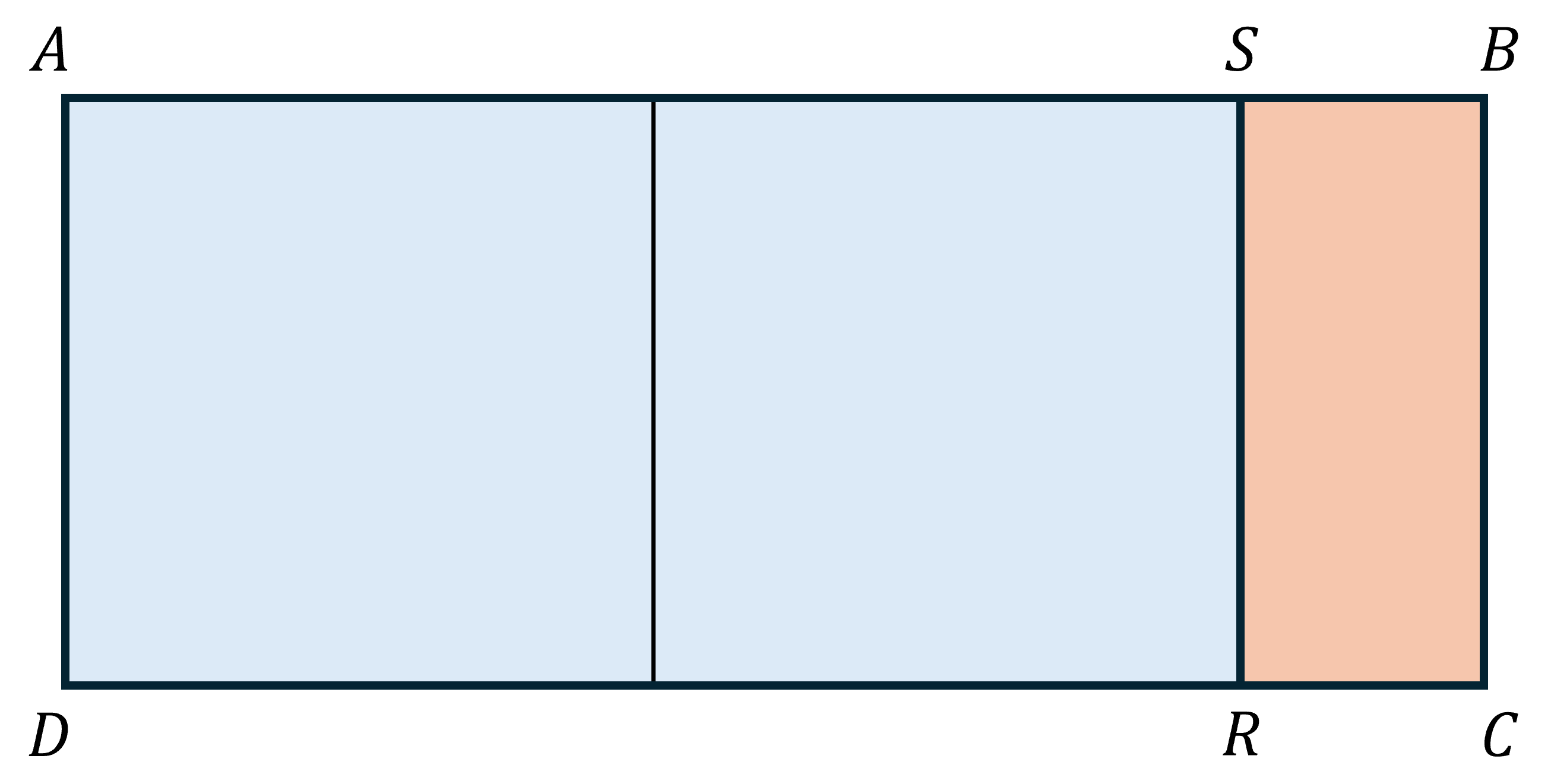“Math is like ice cream, with more flavors than you can imagine – and if all your children ever do is textbook math, that’s like feeding them broccoli-flavored ice cream.” - Denise Gaskins
What do we even mean by \(0.\bar{3}\)? Do the 3s go on forever? If this equals \(\frac{1}{3}\), then it does not take long to ask if \(\frac{3}{3} = 0.\bar{9}\).
It does... but does something feel wrong? Really, wrapping your head around this means coming to grips with what it means to have an infinitely long decimal. Are 1 and \(0.\bar{9}\) really equal, or separated by an infinitesimally small amount?
The decimal expansion of \(\frac{1}{3}\) has a single digit that repeats, so does \(\frac{1}{3^2} = \frac{1}{9} = 0.\bar{1}\). This changes with \(\frac{1}{3^3} = \frac{1}{27}\):
\[\frac{1}{27} = 0.\overline{037}\]
Now three digits repeat, and the digits that appear add to 10. Moving on, let's look at \(\frac{1}{3^4} = \frac{1}{81}\):
\[\frac{1}{81} = 0.\overline{012345679}\]
Now nine digits repeat, and the digits appear nicely and in order... except where is 8? Let's multiply by 2 a few times to see what happens:
\[
\begin{aligned}
\frac{2}{81} &= 0.\overline{024691358} \\
\frac{4}{81} &= 0.\overline{049382716}
\end{aligned}
\]
Is there a pattern that you can use to predict \(\frac{8}{81}\)?
\[
\begin{aligned}
\frac{1}{7} = 0.\overline{142857} &\hspace{1cm} & \frac{4}{7} = 0.\overline{571428}\\
\frac{2}{7} = 0.\overline{285714} &\hspace{1cm} & \frac{5}{7} = 0.\overline{714285} \\
\frac{3}{7} = 0.\overline{428571} &\hspace{1cm} & \frac{6}{7} = 0.\overline{857142}
\end{aligned}
\]
Why do the same numbers always appear? They are even in the same order!?! Does this happen again for other denominators?
Irrational numbers may seem intimidating because their decimal expansion never repeats. While this is true, it does not mean that these numbers are somehow wild and unpredictable rebellious numbers that should be feared - they are just misunderstood.
Legend tells us that the first number discovered to be irrational was \(\sqrt{2}\), but perhaps the problem is that we are trying to use integers in the wrong way. Consider the following rectangle:

This rectangle was constructed in the following way: The segment \(\overline{AD}\) was made into a square, which was then duplicated to form the rectangle in blue. That is, the sides of the blue rectangle have a ratio of \(1:2\). This rectangle is then extended so that the large rectangle \(ABCD\) is similar to the extension \(BCRS\). That is, the rectangle now has a self-similar (or *fractal*) property!

The resulting ratio of the sides of this slightly larger rectangle is now \(1:1+\sqrt{2}\). This is not obvious, but it means that if we remove one of the two big squares we get a rectangle that has a ratio of \(1:\sqrt{2}\):

Perhaps this gives us a new way to describe an irrational number like \(\sqrt{2}\): Build a rectangle that fits 1 square, the remainder fits 2 squares, the remainder of that also fits 2 squares, and so on. The fact that this process never ends is reminiscent of how the decimal expansion for \(\frac{1}{3}\) never ends but follows a simple pattern.
It is currently an open question whether a similar process exists to describe cube roots!
Some irrational numbers are harder to approximate than others. Let's take another look at \(\sqrt{2} \approx 1.414213562\).
Suppose you want to design two gears so that each time one gear rotates through a full cycle, the other one rotates \(\sqrt{2}\) times. Because these ratios are irrational, doing this exactly is impossible - so approximations are the best we can do. But how would we start?
Using decimals, we note that \(\sqrt{2} \approx 1.4\), so a ratio of \(14:10 = 7:5\) is a rough approximation that would lose a revolution every 70 cycles. The next decimal approximation \(\sqrt{2} \approx 1.41\) leads to a ratio of \(141:100\), which would lose a revolution every 237 cycles. That may sound pretty good, except this method has a big blind spot: decimals may not be a good way to describe \(\sqrt{2}\).
In fact, \(\sqrt{2} \approx \frac{17}{12}\), and using a ratio of \(17:12\) loses a revolution every 407 cycles. This is more than five times longer with much smaller numbers of teeth on the gears - clearly a better answer.
One way to understand how you could find these "better" fractions is to slowly increase the denominator until you get a rational number that is closer to $\sqrt{2}$. Doing this a few times and reporting the number of cycles until the approximation is off by a revolution, we get the results from the following table:
\[\text{Approximating }\sqrt{2}:\]\[\begin{aligned}\frac{7}{5} &\longrightarrow& 7&0 \\\frac{17}{12} &\longrightarrow& 40&7 \\\frac{41}{29} &\longrightarrow& 2,37&8 \\\frac{99}{70} &\longrightarrow& 13,85&9 \\\frac{239}{169} &\longrightarrow& 80,78&2\\\frac{577}{408} &\longrightarrow& 470,83&1\end{aligned}\]
Each time we find a better rational approximation, note that the denominator is about ~2.4 times larger and the number of cycles before it is off by a revolution goes up by a factor of ~5.8. If \(\sqrt{2}\) is irrational, why does it seem to have so many patterns?